As a lover of art and culture, a visit to a museum in Tokyo is a must. The most extraordinary museum is the Edo-Tokyo Museum (江戸東京博物館). And one thing catches the eye as soon as you walk in: the building. What does it represent? A dog? A spaceship on four legs? A frog? No, all wrong, but use your own imagination!
Why you should visit the Edo-Tokyo Museum? In this article, I will give you 5 historical facts about Tokyo and finally I will give my opinion about this museum. But first an explanation about Tokyo and Metabolism.
In this Article about the Edo-Tokyo Museum
Useful Websites Tokyo & Japan
- Accommodation Tokyo: Agoda, Booking
- Tours & Tickets: Getyourguide Explore Sumida
- Flight Tickets Japan: Jetradar
- Train Tickets: Japan Railway Pass
- Rental Car: Rental Cars
This page about the Edo-Tokyo Museum contains affiliate links. This means that if you make a booking through one of the links on this website, Travel4history receives a small compensation. This is at no extra cost to you!
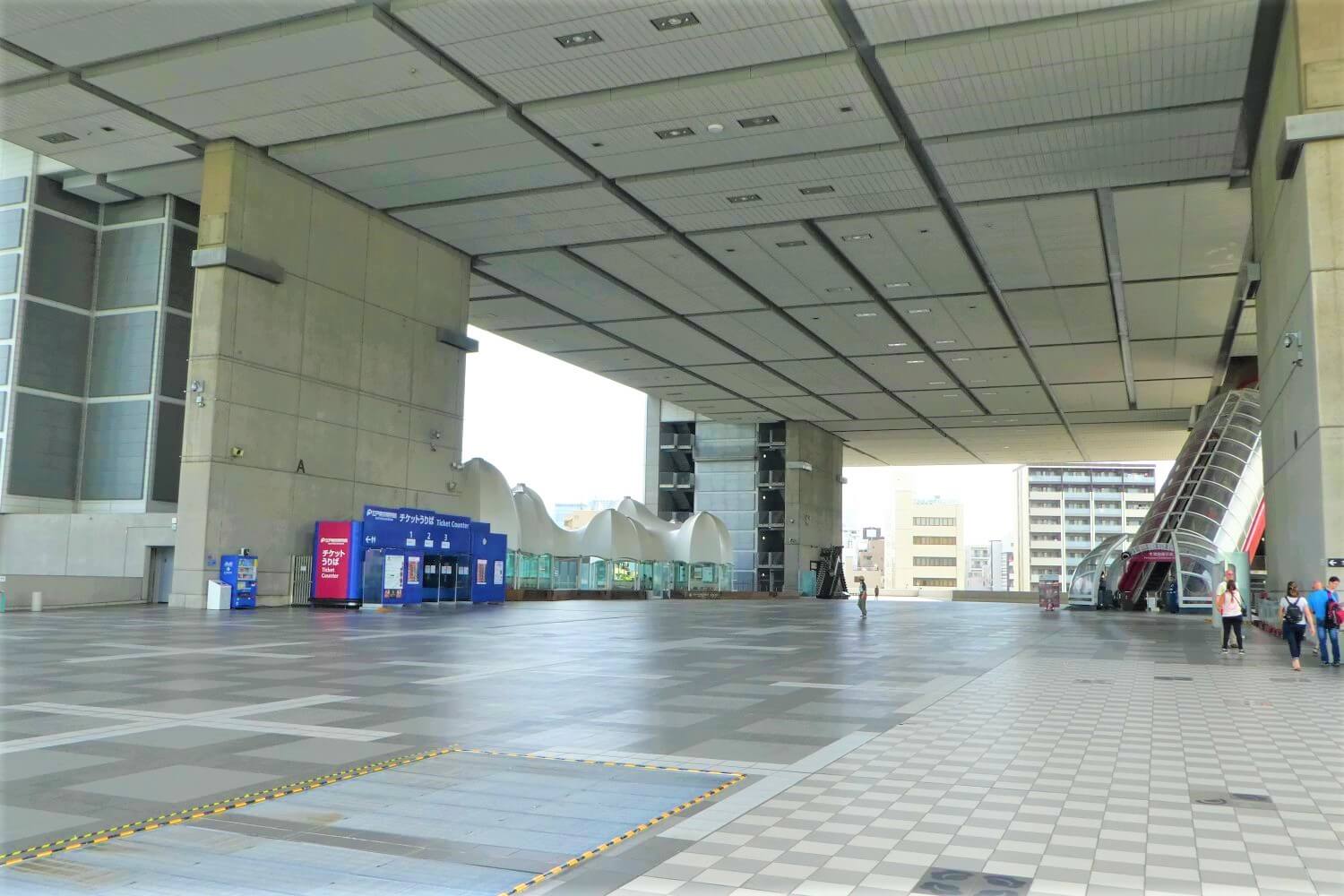
Metabolism? Japanese architecture of the Edo-Tokyo Museum
Metabolism has nothing to do with the human body. It is a Japanese movement in architecture. The Japanese Kiynori Kikutake (1928-2011) was one of its founders and designed the Edo-Tokyo Museum in the 1980s.
Together with other Japanese architects, they published the metabolic manifesto in the 1960s. They opposed the static Western and post-war architecture. Buildings should be subject to future changes. The metabolists were looking for these solutions to future problems. In case of overpopulation, a building had to be extended easily. The world needs flexible and dynamic buildings!
A good example of metabolic architecture is the Nagakin Capsule Tower by Kisho Kurokawa (1934-2007). It reflects the vision of metabolism the best. When needed, the tower can be increased with extra capsules. Useful, isn’t it?
Finally, what is the Edo-Tokyo Museum supposed to be? Simple! A traditional rice warehouse in a modern setting.
Fact: The opening of the museum took place in March 1993 after 12 years of preparation. Metabolism did not play a major role anymore in Japanese architecture from the 1980s onwards.
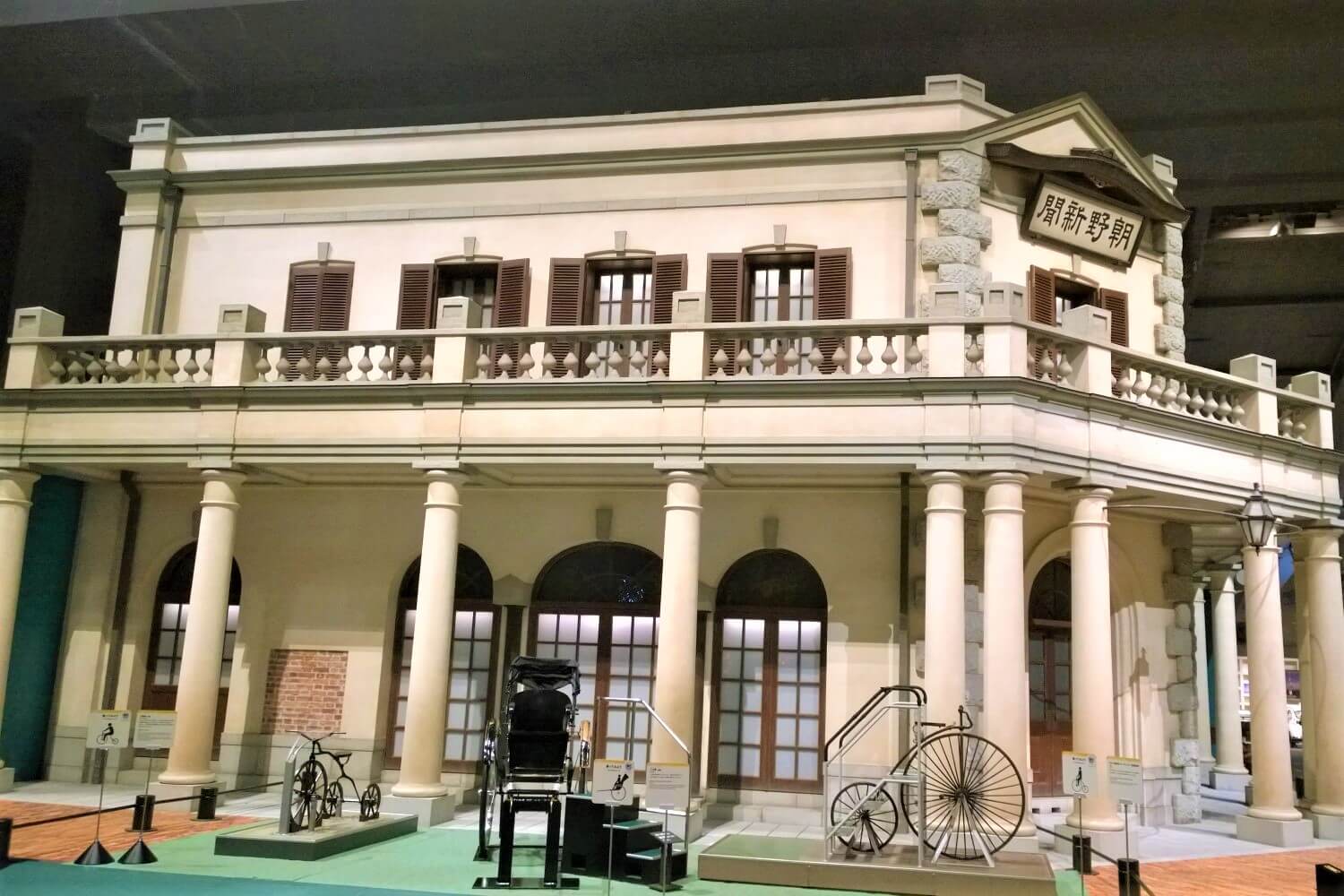
5 historical facts about Tokyo
Planning to visit this extraordinary museum? These 5 historical facts will at least give you an outline of Tokyo’s fascinating history.
The fishing village of Edo as the center of power
When Ieyasu Tokugawa (1543-1616) seized control of Japan in 1603, he had a castle built in the small village of Edo. This was the real beginning of this Tokyo. He ruled over Japan from Edo Castle. In a few decades, Edo grew into a city of more than 150,000 inhabitants. The imperial family still resided in the cultural capital of the country, Kyoto.

The Great Fire of Meireki in 1657
On 2 March, a great fire started in the city known as the Great Fire of Meireki. Like wildfire, stirred up and scattered by the wind, Edo largely burned down. More than 100,000 people died and it took 2 years to rebuild the city.
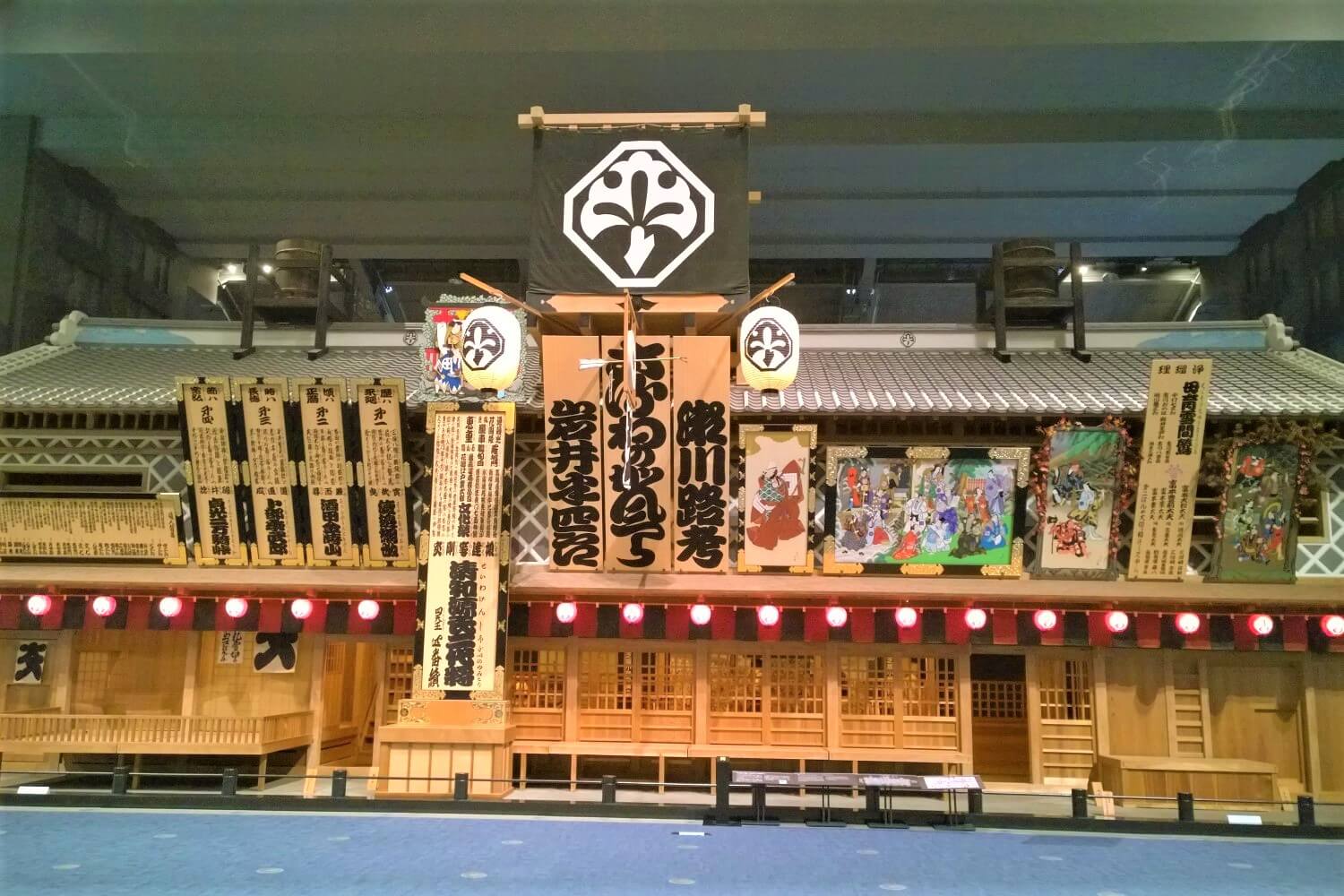
The Meiji Restoration in 1868: The year of the great change
In Japan, the year 1868 is seen as a big change. In this year the Meiji Restoration began. Emperor Meiji officially became the most powerful man in the country and the samurai and landlord system came to an end after 700 years. The emperor decided to move from Kyoto to Tokyo and the latter became the new capital of the country. Japan was facing great changes, but by 1900 it was one of the most modern countries in the world. Emperor Meiji finally died in 1912.
Tip: Would you like to know more about Emperor Meiji? Then visit Meiji Jingu Shrine, but first read the article: Meiji Jingu Shrine | Commemorate the Emperor of Modernisation.
A big disaster in 1923: The Great Kanto Earthquake
On Saturday 1 May 1923, Japan was struck by an earthquake. It had a magnitude of 7.9 on the Richter scale and brought death and destruction to the streets of Tokyo. It killed more than 100,000 people and, together with the Great Fire of Meireki, was one of the city’s greatest disasters. Until…
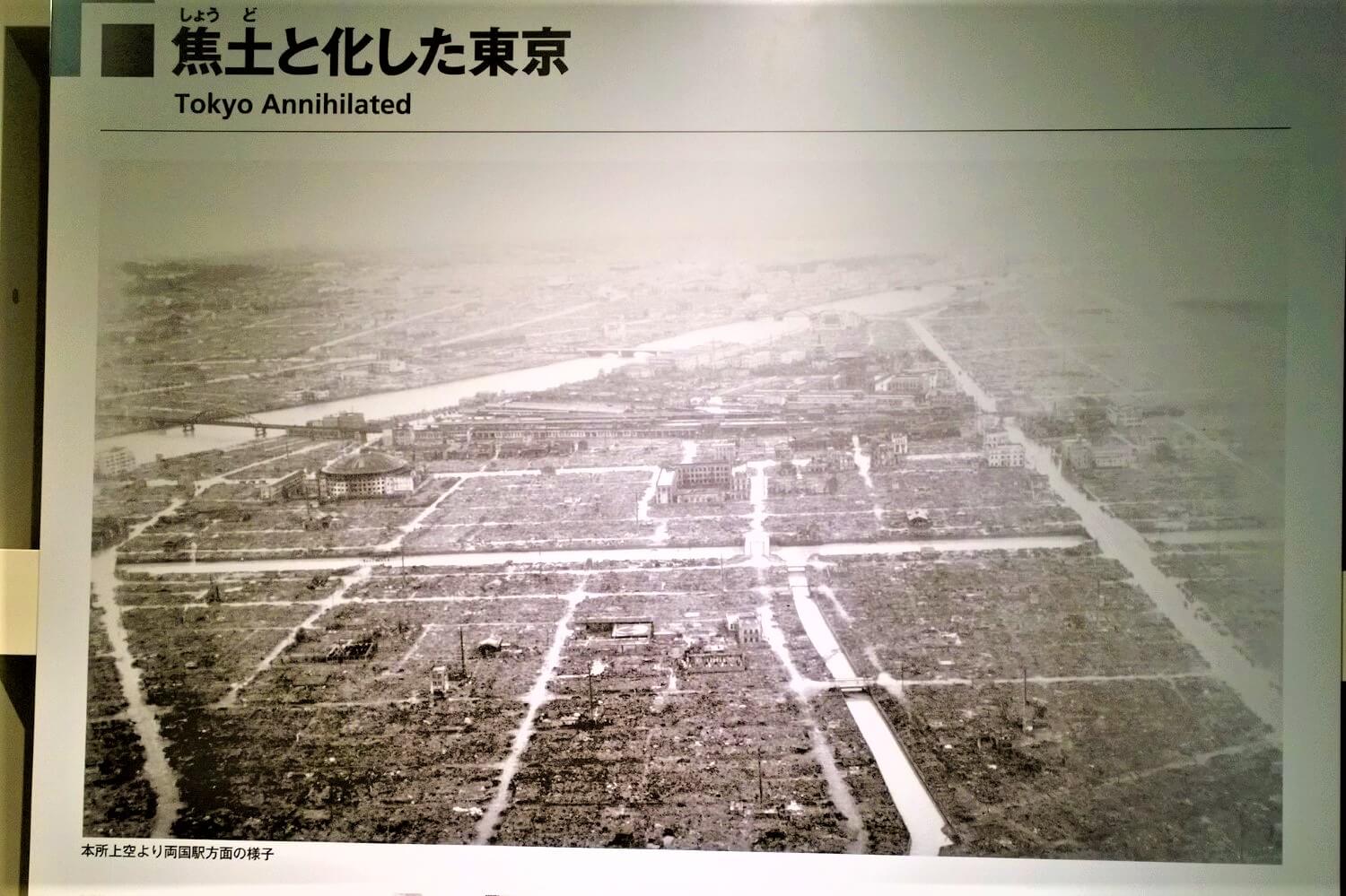
Tokyo bombed to the ground by Allied forces during the Second World War
Did you know that the number of casualties during the bombing of Tokyo exceeded the number of casualties caused by the exploding of the atomic bombs on Nagasaki and Hiroshima combined? Tokyo killed about 400,000 people, the atomic bombs killed about 250,000. The city was in ruins and many historic buildings were destroyed. Therefore, during a visit to Tokyo, you should look carefully for old buildings or remnants. It did eventually lead to the fact that Tokyo today is one of the most modern metropolises in the world.
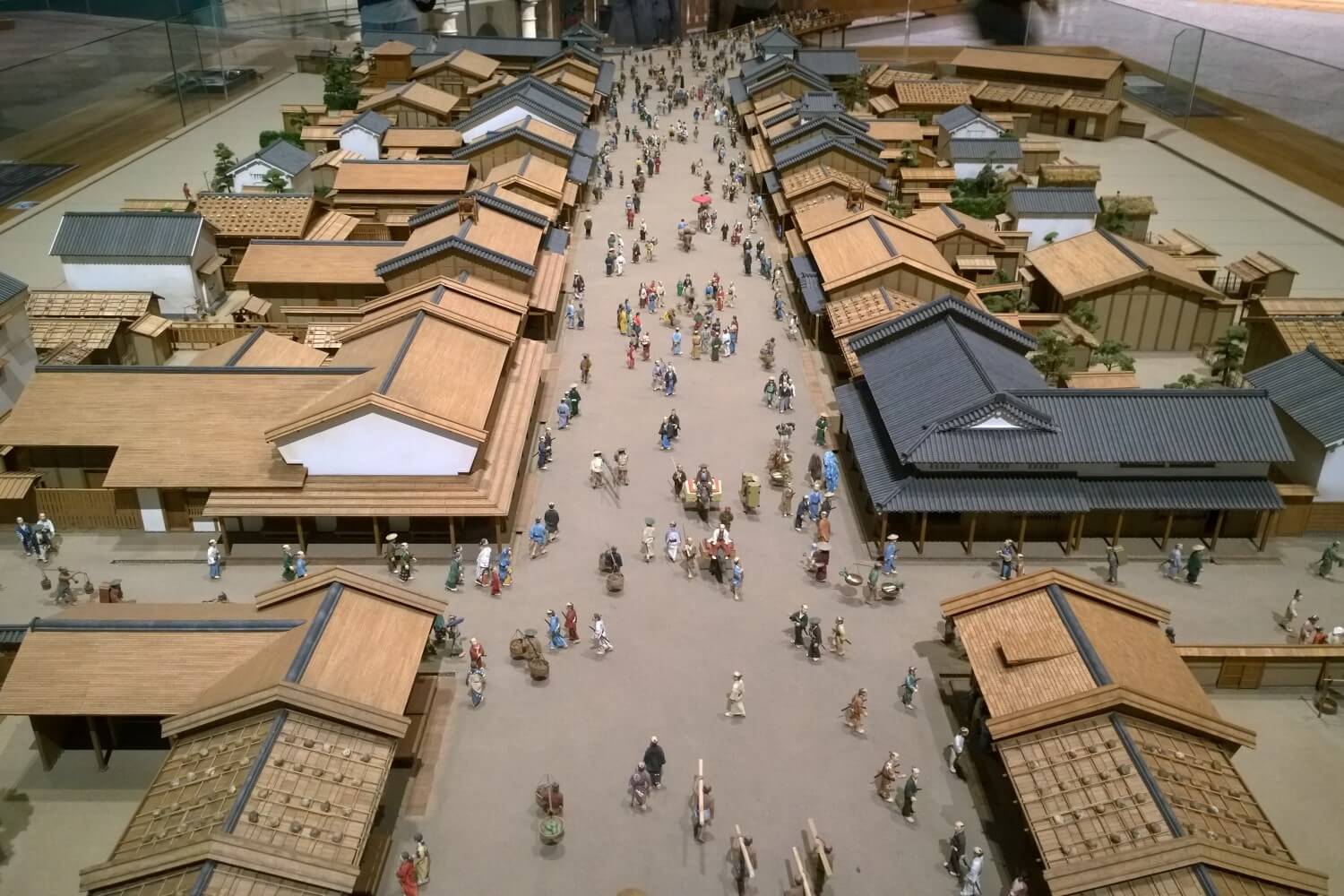
A review of the Edo-Tokyo Museum
Personally, I thought this was the best museum I visited in Tokyo. There is a lot to see, several buildings have been copied like the Nihonbashi bridge and a kabuki theatre and a lot is explained about the city. Are you planning to visit Tokyo? Then go to this museum first for a historical introduction to the city.
The Edo-Tokyo museum consists of 7 floors in total (you wouldn’t know it!), of which two are dedicated to permanent exhibitions. One hall is about the Edo period (1603-1868), the other hall, however surprisingly, is about the period 1868 to the present modern era. Temporary exhibitions sometimes take place on the ground floor. It is possible to get a free guide who speaks English. However, many of the information signs are also translated into English.
Tip: next to the Edo-Tokyo Museum are the Sumo Museum and the Ryokogu Sumo Stadium. Sumo wrestlers regularly walk past here. Nice for a photo or a fight? Ryogoku is thererfore called Sumo Town.
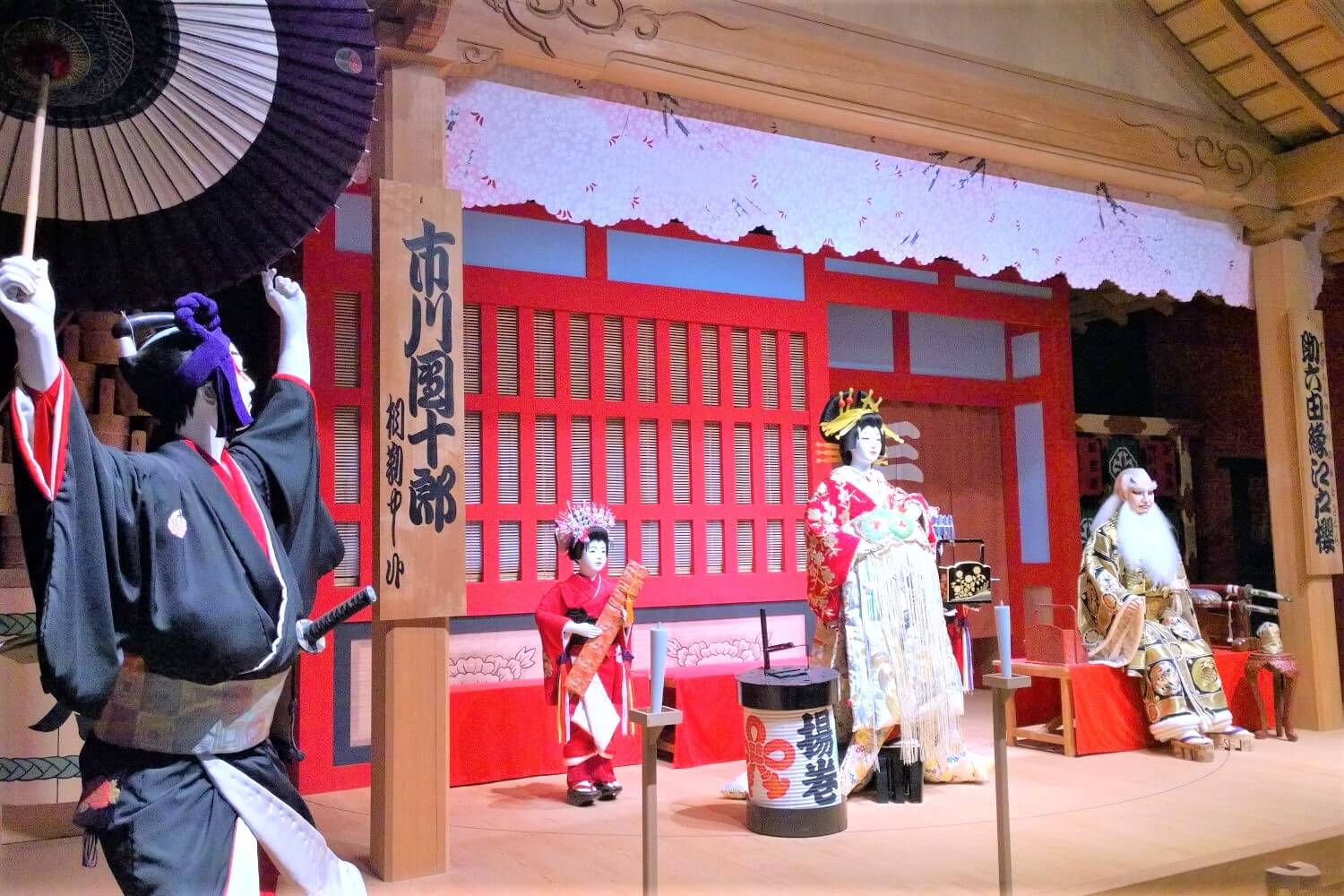
Practical information about the Edo-Tokyo museum
How to get there?
The Edo-Tokyo Museum can be reached via the JR Chuo line, Ryogoku Station (exit west). From here it is a 5-minute walk to the entrance. A visit to the Edo-Tokyo Museum costs 600 yen.
Opening Hours
The Edo-Tokyo Museum is closed on Monday, except on a national holiday. Tuesday till Sunday 9:30 am – 5.30 pm. On Saturday till 07.30 am.
Maybe also interesting?
- The 15 best historical sights of Tokyo
- Hachiko | The Amazing Story of the World’s Most Faithful Dog
- Imperial Palace | A route along the former Edo Castle
- Zojoji Temple | The most important shrine in Tokyo?
- Sensoji Temple | 5 facts you need to know before you go
Do you have more tips, ideas, or comments about this article and the Edo-Tokyo Museum? Then feel free to leave a message below.